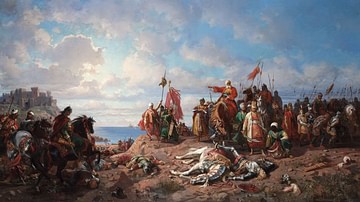Review

| Rating: | |
|---|---|
| Title: | The Politics of Reproduction in Ottoman Society, 1838–1900 |
| Author: | Gülhan Balsoy |
| Audience: | University |
| Difficulty: | Hard |
| Publisher: | Routledge |
| Published: | 2016 |
| Pages: | 192 |
"The Politics of Reproduction in Ottoman Society, 1838-1900" sheds light on how turbulent population changes led to anxieties in the Ottoman elites and the state. In this context, Balsoy illustrates how medical modernization was employed by authorities to discipline the female body and control the population. The book provides a clear image of the 19th Century’s perspective on women in Ottoman society and is a must-read for those interested in Ottoman women's history.
Gülhan Balsoy is a professor of history at Istanbul Bilgi University. The book is a revised and rewritten version of Balsoy’s PhD thesis. The book's five chapters respectively focus on the history and transformation of midwifery, abortion, pregnancy, and infertility in Ottoman society. While investigating these themes, Balsoy asserts that reproduction was not a natural experience but a political subject. Balsoy examines how the Ottoman state and elites attempted to change together with control of the female body and subjected it to medical and legal control by using institutions, laws, and medical doctors. According to Balsoy, the state and Ottoman elites constructed the pronatalist means to increase the Turkish/Muslim population by transforming midwifery practices, banning abortion, medicalizing pregnancy/childbirth, and inclining on infertility issues. Balsoy challenges the dominant idea in the historical scholarship that the Ottomans attempted to create a heterogenous Ottoman identity in the society.
The main contribution of this book is derived from the reception of medical modernization through political and institutional means. It demonstrates that the medical elites or obstetricians reflected the Ottoman state’s mentality on the decline of the Turkish/Muslim population. For example, the first law on abortion in 1838, the establishment of the Midwifery School in 1842, and licensing midwives or prioritizing obstetricians were precautions for the state’s population anxiety. However, after investigating literature on Besim Ömer, a famous pronatalist, and Ottoman obstetrician at that time, Balsoy successfully showed that the dichotomy between “old crones” and doctors were not the whole picture. Besim Ömer and many obstetricians asserted that "old crones" were uneducated and lacked hygiene. Despite their ideas about untrained midwives, doctors or licensed midwives also experienced failures in their operations. Thus, the problem put forward by Besim Ömer was not demographic but political and ideological. Another impactful aspect of the book is how anti-abortion and pronatalist ideas are represented in popular literature and advice books for pregnant women. These sources help us to map a combination of social mentality and forced pronatalist agenda by Ottoman authorities, which controlled and disciplined female bodily experiences to alleviate the population anxieties of the elites.
Despite these contributions, there lacks an explanation of how and why these elites had population anxiety or whether they were sure about their homogeneous Ottoman identity in every case. In other words, did all Ottoman elites have this population anxiety? Many sources utilized by Balsoy usually only show us the perception of the Ottoman obstetricians. Another point raised is the comparison between other social groups. For example, the practices of non-Muslim women, especially midwifery or the medicalization process of pregnancy and their experiences, are lacking. However, including other socio-ethnic and religious groups may enrich the literature on the effects of reproduction policies. It is understandable that this book lacks in these two points since finding primary sources written by women and other disenfranchised groups in Ottoman society has always been a challenge for historical scholarship.
This book is an academically fulfilling work on the late Ottoman society. Specifically, prescriptive or advice books and popular literature are utilized quite well in this book. However, her main argument about the politicization of reproduction and the female body stays slightly rigid because the primary Ottoman sources give us a more sophisticated picture than Balsoy's main argument. The spread of pronatalist ideas and politicization of the female body via medicalization and legal means can provide a portrait of how the state and the elites may have population anxieties. Nevertheless, we still cannot avoid the complexities of social changes in the public area, especially when there are few personal or collective accounts of women. In the end, Balsoy's argument is well-researched and invaluable for opening up a space for discussing the female experiences in the late period of Ottoman society.
About the Reviewer
Cite This Work
APA Style
Koçoğlu, M. (2024, November 01). The Politics of Reproduction in Ottoman Society, 1838-1900. World History Encyclopedia. Retrieved from https://www.worldhistory.org/review/483/the-politics-of-reproduction-in-ottoman-society-18/
Chicago Style
Koçoğlu, Musa. "The Politics of Reproduction in Ottoman Society, 1838-1900." World History Encyclopedia. Last modified November 01, 2024. https://www.worldhistory.org/review/483/the-politics-of-reproduction-in-ottoman-society-18/.
MLA Style
Koçoğlu, Musa. "The Politics of Reproduction in Ottoman Society, 1838-1900." World History Encyclopedia. World History Encyclopedia, 01 Nov 2024, https://www.worldhistory.org/review/483/the-politics-of-reproduction-in-ottoman-society-18/. Web. 24 Apr 2025.




